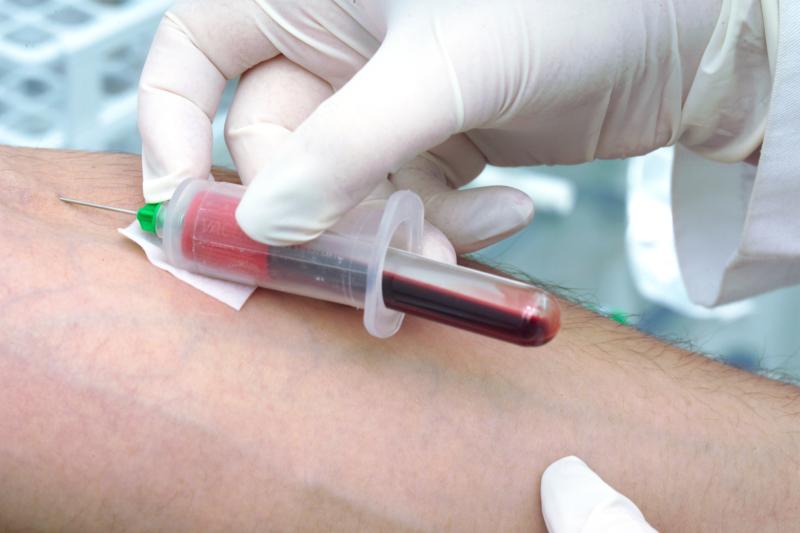The primary function of our immune system is to make antibodies to help fight infection. There are cases though where the immune system launched an autoimmune reaction where instead of attacking the foreign particles that causes the infection; these antinuclear antibodies are attacking your own tissues instead.
If you are suspected to have an autoimmune disease such as rheumatoid arthritis, lupus or scleroderma, your doctor may order an ANA blood test to confirm this.

What Are Antinuclear Antibodies?
Before we get to know what antinuclear antibodies are, let’s talk about antibodies first.
Antibodies are produced by our immune system and their primary function is to identify and fight infections. They are protein which signals your immune system when harmful substances such as viruses and bacteria enter our body. They are the natural byproduct of the immune system to keep our body healthy and free from infections and other diseases.
Sometimes though, an autoimmune response is launched in which antibodies are mistakenly attacking your healthy tissues and cells. Antinuclear antibodies or ANA are the type of antibodies that targets the healthy proteins in your cell’s nucleus.
Autoimmune diseases such as scleroderma, lupus, mixed connective tissue disease, rheumatoid arthritis and others can occur when our immune system launches an attack to destroy the normal tissues of our body. Most common symptoms of these autoimmune diseases are swelling, rashes, fatigue or arthritis.
What Is an ANA Blood Test? And When Is It Needed?
To properly evaluate if a patient has an autoimmune disorder, his physician will request for an antinuclear antibody test. This test measures the presence of antinuclear antibodies in the blood to help with proper diagnosis of autoimmune diseases.
While a single antinuclear antibodies blood test can’t provide a specific diagnosis, it helps in ruling out some diseases. When you get a positive result in the ANA test, other blood tests can be performed to check for the presence of particular antinuclear antibodies which are specific to a certain type of autoimmune disease.
When will your doctor recommend this type of test?
If you exhibit symptoms or signs of systemic autoimmune disorder, your doctor may recommend an ANA test. The diagnosis of autoimmune disorder can be tricky at times since symptoms presented are sometimes non-specific and vague.
Patients diagnosed with autoimmune disorder exhibit one or more of these common symptoms and signs:
Low-grade fever
Pain in one or more joints that resembles that of an arthritis
Weakness or fatigue that is persistent
High sensitivity of skin to light
Presence of red rashes
Muscle pain
Hair loss
Tingling or feeling of numbness in the hands or feet
Damage and inflammation of tissues and organs, including lungs, heart, kidney, central nervous system, heart’s lining and blood vessels
How Is the Procedure Performed?
You don’t need to make preparations if you will undergo an ANA test, especially if your blood sample will be used for this sole purpose. In cases where your blood sample will also be used for some additional laboratory tests, you will be instructed to go on fasting for a specific amount of time before taking the test.
Since some drugs can affect the test’s accuracy, it is imperative that you inform your doctor of any supplements or medications that you are taking.
The procedure of an ANA blood test is the same to other blood tests. First, an elastic band will be tied around your upper arms by a phlebotomist. This step makes it easier for them to locate a vein. Then, they would clean the area with an antiseptic and a needle will then be inserted into a vein. Once the needed amount of blood is collected, the needle will be removed from the vein and band aid will be used to cover the puncture site.
A small scalpel is used to puncture the skin in the cases of children or infants since their veins are smaller and harder to locate. Once the skin has been punctured, phlebotomist uses a small tube or a test strip to collect the blood sample.
This blood sample is then sent to the laboratory for evaluation and examination.
The entire process is not painful itself; however, some patients may feel slight to moderate pain when the needle starts to go into the skin. Others who have fear of needle may find this procedure dreadful.
Interpreting the Result
If the result of the ANA blood test is positive, it means that high level of antinuclear antibodies are present in your blood. This, however, is not an indication that you have an autoimmune disease as there are patients who are 100% healthy came up with a positive test result. This is what we call “false-positive” result. If the test shows positive but you don’t exhibit any symptoms of an autoimmune disease, it might be ignored.
Since ANA test alone can’t provide a specific diagnosis, your physician would have to rely on your symptoms and other laboratory tests to get a correct diagnosis. However, a positive ANA test may be associated with these conditions:
Cirrhosis of the liver – Scarring of the liver, which is usually caused by viral infections and alcohol abuse
Lupus – A type of autoimmune disorder that affects different body parts including skin, heart and digestive tract
Sjogren syndrome – Affects lacrimal and salivary glands
Rheumatoid Arthritis – Causes swelling, pain and stiffness in the joints
Thyroid Disease – Affects your thyroid
Scleroderma – Affects the skin and other connective tissues
Temporal Arthritis – A disorder where the arteries that supply blood to the brain and heart become damaged.
While the ANA test is not a sole indication of having an autoimmune disease, it plays a significant role though in the diagnosis of lupus. More than 95% of lupus patient got a positive ANA test result.
A negative result means that you don’t have an autoimmune disease.
View All Comments /Add Comment